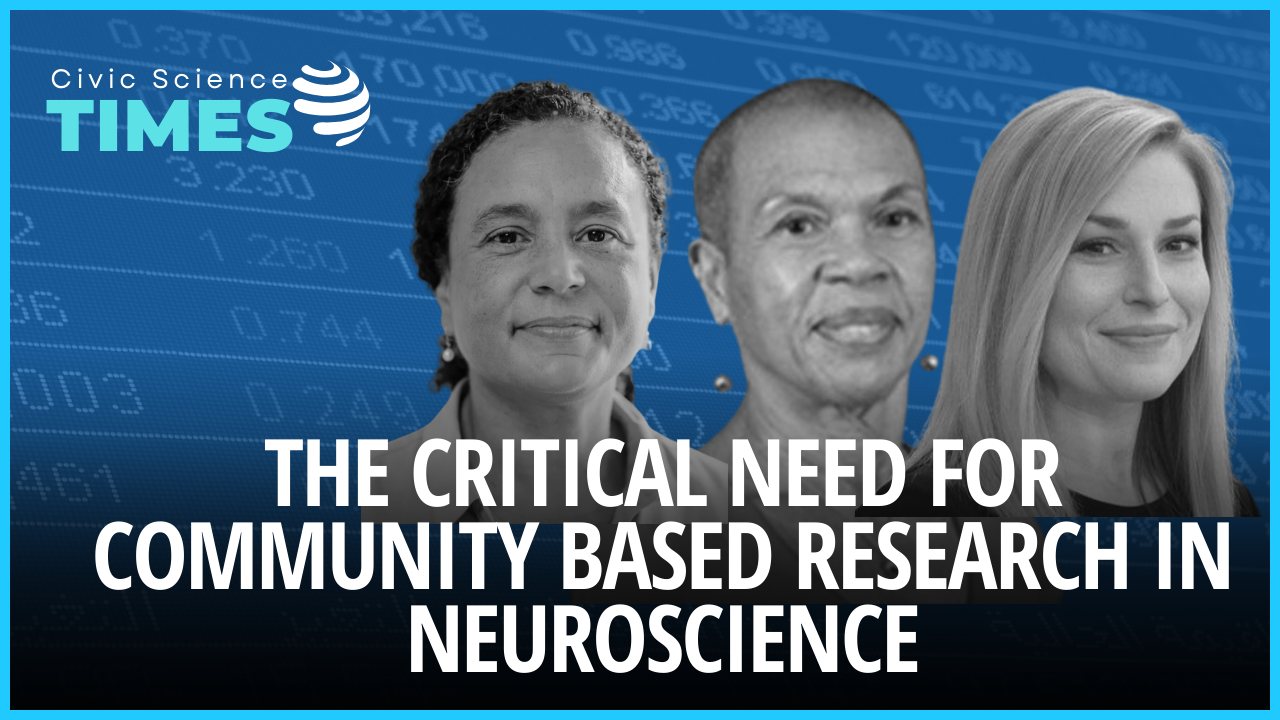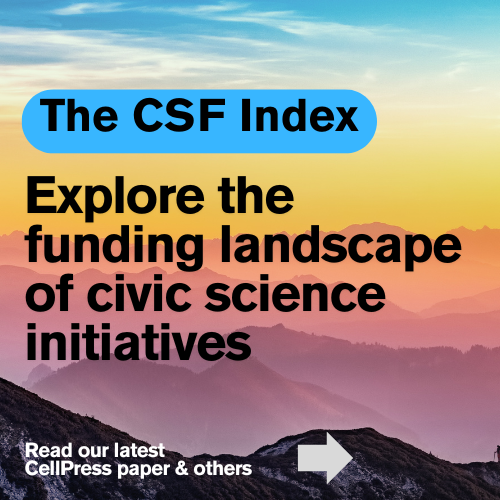Civic Science Observer
The critical need for community based research in neuroscience and how UCLA and Charles R. Drew University are addressing it through their new Dana Center

I am hearing about 3 helicopters hovering overhead right now.” Dr. Helena Hansen, co-PI of the UCLA and Charles R. Drew University (CDU) Dana Center for Neuroscience and Society said through the screen. We sat down to discuss the work being done at the Dana Center and, at the time, violence had sprouted on campus in response to pro-Palestinian protests. While helicopters were new to UCLA’s campus, they were very well known in neighborhoods just 20 miles away. Low flying helicopters are so pervasive in south central LA that it has become a real concern for residents of the area, including families.
The helicopter noise that Dr. Hansen was experiencing was incredibly topical as the pilot project that won UCLA/CDU the Dana Center grant was built around south LA resident’s concern over the helicopter noise in their neighborhood. Parents were worried about their children’s sleep health as these helicopters were often found flying late at night and early in the morning. Parents wanted to know its effects on the brain. “I’m getting the embodied experience of south LA residents right now,” Dr. Hansen noted.

Earlier this year, UCLA and CDU launched their Dana Center for Neuroscience and Society funded by the Dana Foundation (read more about the Dana Foundations funding efforts here). The center is co-led by Dr. Helena Hansen, Dr. Gina Poe, and Dr. Ashley Feinsinger of UCLA, and Dr. Denese Shervington and Dr. Amy Woods of CDU. Charles R. Drew University is a medical school recognized as an HBGI (historically black graduate institution) and a member of the Hispanic Association of Colleges and Universities. CDU was founded in 1966 in the wake of the Watts Uprising and in direct response to the health needs of south LA members who were overlooked in healthcare.
Ultimately, the research and clinical work done at CDU is centered in the community of south LA. CDU’s commitment to community-centered research and medicine allowed for a beautiful partnership between them and UCLA. The UCLA/CDU center’s mission is to create a space for the residents of south LA, including community leaders, families, young people, and elders, to engage in neuroscience research. It will focus on community-based research, which impressed the Dana Foundation when they were reviewing the pilot project. To learn more about the center, I was privileged to speak with Dr. Hansen, Dr. Shervington, and Dr. Feinsinger.
During our conversation, Dr. Shervington emphasized the bi-directional nature of the research being done at the center. UCLA and CDU faculty and staff are actively working with the community to develop research questions, test hypotheses, and disseminate results together. Dr Feinsinger notes that the center is resisting “extractive models of engagement” and “top-down” research practices in which researchers come into communities, identify a problem, and solve it themselves. The center is relatively novel in that it is actively engaging with the community, not only by empowering them to ask the research questions, but by actually inviting them into the labs to do hands-on research.
In addition, faculty and staff from UCLA and CDU are going into south LA communities to learn from community members and understand their lived experiences. During my conversations, Dr. Hansen, Dr. Shervington, and Dr. Feinsinger all emphasized the immense expertise and knowledge south LA community leaders and members have surrounding not only the needs but the successes of their community. Meaning: south LA members know what they need and are capable of finding solutions. They have expertise that researchers can and should learn from. However, that doesn’t mean they are not without questions. Questions that the UCLA/CDU Dana Center want to help address through neuroscience research.
How does this work practically, though? The research done at the UCLA-CDU center for neuroscience and society is rooted in human-centered design. Human-centered design is an approach, often used in the business and technology sector, that focuses on the needs of the consumer. It involves clarifying and empathizing with the consumer needs and concerns, creating a solution, developing a prototype to beta-test, and, finally, implementing the solution. With a few tweaks, human-centered design is an excellent methodology to pursue community-based research, but is often left unused in academic research. Dr. Shervington explained to me how they engaged in human-centered design with south LA members.
The UCLA/CDU center started by hosting a think-tank in which they brought south LA community members together and asked them what their concerns or questions were and how they think neuroscience can address them. One of the issues that kept coming up was the issue of helicopter noise at night. As previously mentioned, low-flying helicopters are incredibly pervasive in south LA, flying late at night and early in the morning. Families and young people had become very concerned. Did the constant droning from the helicopters affect the brains of south LA children? Was it affecting residents’ sleep, and if so, how did that impact brain functioning?
True to their word, faculty and staff at the center took these concerns seriously and worked with community members to create research questions and hypotheses. Hypotheses that UCLA and CDU faculty and staff together with south LA residents were able to test using varying methods including in-field recording of helicopter noise and fruit fly breeding under similar noise conditions. Sure enough, true to south LA residents’ suspicions, preliminary results proved the helicopter noise did have an impact on the brains of their models. The Dana Center at UCLA/CDU is actively expanding on this research.
The work, however, did not stop there. Knowing what they know now, south LA residents and UCLA/CDU staff, including Dr. Nick Shapiro, who is working with the UCLA/CDU center, is bringing their results to LA City Hall where decisions on buying more helicopters for the Sheriff’s office are currently being made. During our conversation, Dr. Hansen emphasized this crucial piece: the Dana Center at UCLA/CDU does not want research to stop at the results. Its mission is to perform actionable research to not only help answer south LA resident’s questions about the brain and environment, but also engage in science-informed policy and advocacy, Dr. Hansen explained.
Ultimately, the Dana Center at UCLA/CDU is embarking on a critical mission of performing community-based neuroscience research. Dr. Ashley Feinsinger emphasized the “moral imperative” of such research. “Basic neuroscience, questions about the brain… sits in a very special place where science can really benefit people,” she states. However, if the brain research being done is not actually addressing the concerns or questions of society, including local communities, it calls into question the ethical implications of such research. As mentioned in our previous article, the Dana Foundation’s goal is to make the biggest impact in society, specifically, neuroscience and society.
The foundation clearly saw the great potential of the UCLA/CDU center to really benefit people and society by awarding it the Dana Center grant. The Dana Center at UCLA/CDU is breaking the mold of traditional academic research by performing bi-directional, human-centered research that is completely community-based. While their pilot project is very exciting and impressive, they are not stopping there. Dr. Hansen and Dr. Shervington shared some of their potential future research projects including examining what the community is doing to promote their own health, like creating community gardens, understanding the role of music and the arts in south LA and its effects on the brain, the effects of education inequality, and much more.
We will continue to follow the Dana Center at UCLA/CDU to see what they and the South LA community do next.
SEARCH <FUNDING> OR <NEUROSCIENCE> ON THE TERMINAL TO FIND MORE RELATED STORIES
Bernadette Weigman is a neuroscience and society reporter for The Civic Science Observer. She covers the civic dimensions of neuroscience, including its intersections with education, public engagement, and the broader societal implications of brain science. She engages with scholars and practitioners to learn about their public engagement work and how they navigate the ethical, cultural, and institutional challenges of bringing neuroscience into public life.

-
Civic Science Observer4 weeks ago
What are the objectives of the Neurotech Justice Accelerator at Mass General Brigham?
-
Civic Science Observer3 days ago
Meet the New Hampshire organization changing the way we see insects
-
Civic Science Observer2 months ago
Dear Colleagues: Now is the time to scale up public engagement with science
-
Civic Science Observer5 days ago
Dear Colleagues: Help us understand the national impacts of federal science funding cuts on early career researchers in academic laboratories























